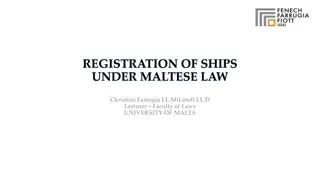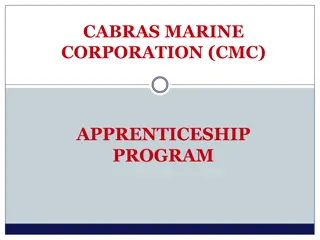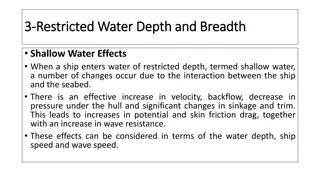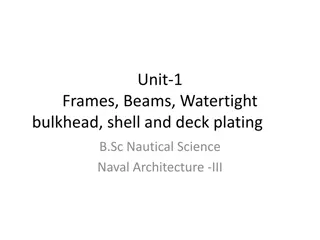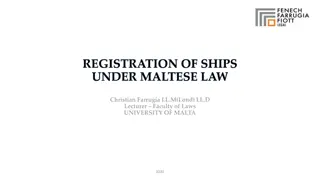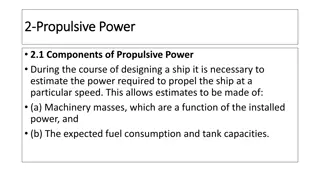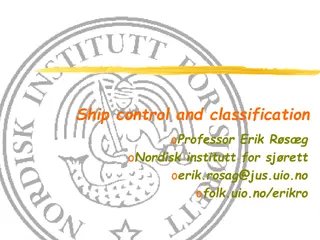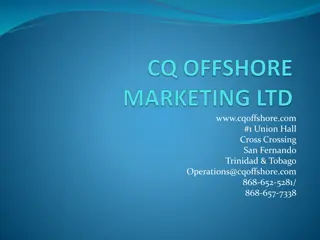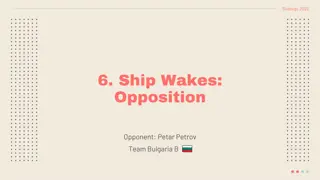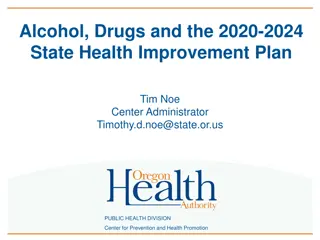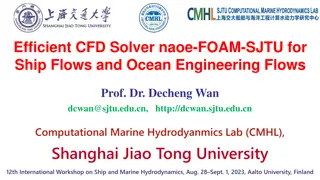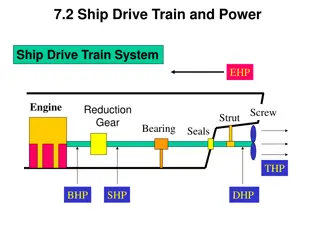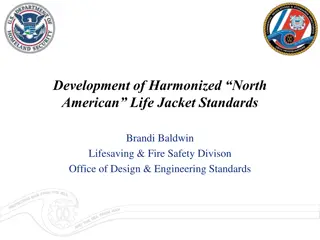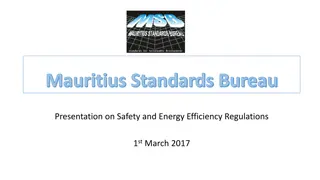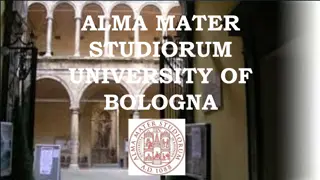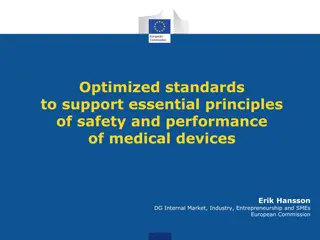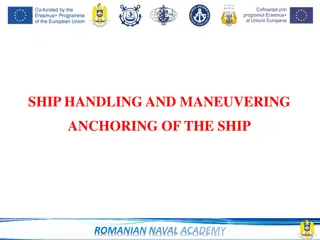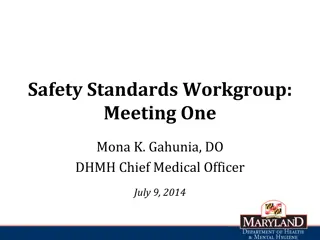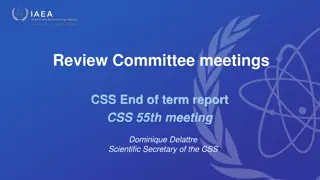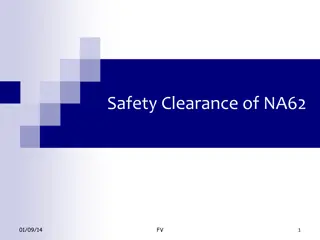Ship Classification Society Standards and Safety Needs
ABS and ASTM International play vital roles in establishing and enforcing safety standards for the marine industry. The rules and identified risks cover various aspects like structural integrity, propulsion, and safety hazards. Requirements stem from safety criteria, international regulations, and industry standards, ensuring a comprehensive approach to maritime safety.
Download Presentation

Please find below an Image/Link to download the presentation.
The content on the website is provided AS IS for your information and personal use only. It may not be sold, licensed, or shared on other websites without obtaining consent from the author. Download presentation by click this link. If you encounter any issues during the download, it is possible that the publisher has removed the file from their server.
E N D
Presentation Transcript
ASTM International Committee on Ships Title of Presentation and Marine Technology ( F25) Classification Society Standards Needs Jim Gaughan Vice President & Chief Engineer Washington DC 7 May 2014
Our Mission The Mission of ABS is to serve the public interest as well as the needs of our clients by promoting the security of life and property and preserving the natural environment
The Rules Developed with intent to establish an acceptable level of safety Intended to reduce the occurrence of an undesirable event threatening life , property or the natural environment Often reactive to an accident or episode Some incorporating International (IMO ) Requirements All should be related to one or more identified risks
Identified Risks Loss of Structural Integrity Loss of Propulsion Loss of Maneuverability Loss of Electrical Power Loss of Station Keeping Loss of Buoyancy or Stability Loss of Containment cryogenic fluid , flammable liquid or vapor Fire and Explosion Overpressure / Underpressure Personnel hazards radiant heat, electrical shock, axphisiation
Source of Requirements Internally developed safety criteria Hull Structural Mechanical components of steering, station keeping and propulsion systems Control system functional requirements IMO / SOLAS Stability , subdivision , fire protection , marine pollution , electrical power , communication systems , liquefied gas containment systems Applicable Industry standards Machinery components , electrical and instrumentation systems and components , piping systems and components , containment and fluid processing components , lifting appliances, deck machinery, venting, delineation of hazardous areas, drilling equipment , safety systems and components
Recognized Standards Normally recognized by the home National Government Not less effective than a standard acceptable to ABS Addresses the specific risks considered by the Rules Complete Scope to the extent needed Provides a basis for rating or acceptance Current
New standards needed Standard providing correlation between gas concentrations and hazardous areas as per IEC 60092-502 (1999) Procedures for sampling and measuring of gas on board ships Standard for design and fabricating of standard parts and fittings associated with loading arms. See EN 1474-2 and EN- ISO 28460 Annex A.2 of COMMISSION DIRECTIVE 2013/52/EU of 30 October 2013 amending Council Directive 96/98/EC on marine equipment
New standards needed Equipment in cryogenic service required by the Rules Valves in cryogenic service (5C-8-4/3.2.1) LNG cargo pumps (5C-8-5/3.2.3) NG compressors LNG cargo hoses LNG safety relief valves Flame screens on LNG vents (5C-8-17/10) Flanges in cryogenic service ((5C-8-5/2.4.5) Portable ventilation equipment (5C-8-11/2)
Thank You Title of Presentation


